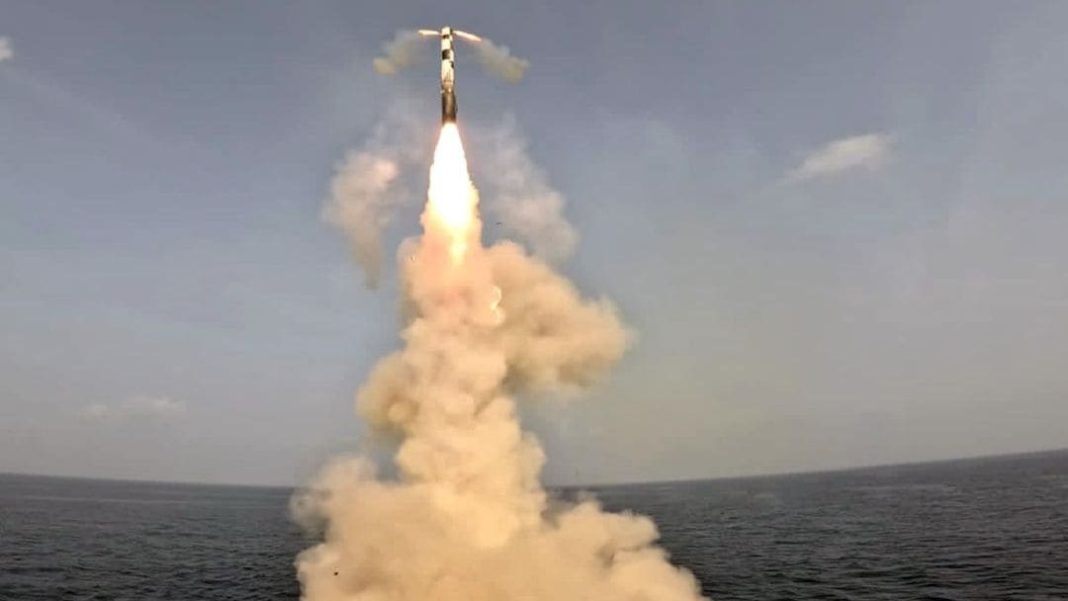India has successfully conducted a significant test of its K-4 submarine-launched ballistic missile (SLBM), which has the capability to carry nuclear warheads. The test took place on the morning of November 27 from the INS Arighaat, a recently commissioned nuclear-powered submarine, in the Bay of Bengal, close to the coast of Visakhapatnam.
The K-4 missile is an advanced weapon powered by solid fuel, with a striking capability extending up to 3,500 kilometers. The test launch occurred from the INS Arighaat, a substantial 6,000-ton submarine that enhances the strategic deterrent capabilities of the Indian Navy. This submarine is classified as an SSBN (Ship Submersible Ballistic Nuclear), specifically designed to carry nuclear-armed ballistic missiles, marking a pivotal advancement in India’s naval defense posture.
INS Arighaat is India’s second nuclear-powered submarine, building upon the foundation set by its predecessor, the INS Arihant. While the INS Arihant is equipped with K-15 missiles, which have a range of 750 kilometers, the introduction of the more advanced K-4 missiles capable of reaching targets up to 3,500 kilometers signifies a noteworthy enhancement in India’s sea-based nuclear deterrence strategy. This capability allows for the covert launch of missiles while submerged, thereby complicating adversarial defensive measures and bolstering India’s deterrent posture.
Looking ahead, India is set to incorporate its third nuclear-powered submarine, the INS Aridhaman, into its fleet by early 2025. Weighing in at 7,000 tons, the INS Aridhaman will further consolidate the nation’s sea-based nuclear defense capabilities.
The K-4 SLBM, developed by the Defence Research and Development Organisation (DRDO), represents a considerable leap in naval warfare technology. With a range of 4,000 kilometers, the K-4 vastly outstrips the operational limits of the K-15 missile, which is designed primarily for coastal defense.
The missile features a hefty weight of 17 tons, measures 12 meters in length with a diameter of 1.3 meters, and is built to accommodate a 2,500 kg strategic nuclear warhead. The K-4 is propelled by a two-stage solid rocket motor, ensuring both reliable performance and robust functionality.
The missile’s development has included clandestine testing, with the first known test occurring in January 2010 near Visakhapatnam. This test highlighted the K-4’s underwater launch capability, as the missile was launched from a submerged pontoon five meters below the surface. Subsequent tests confirmed its ability to handle high water pressures and validate performance standards vital for operational readiness.
With the K-4 missile and the new submarines, India further entrenches its position in the realm of strategic deterrence, enhancing national security and safeguarding its maritime interests against potential threats. The successful testing of the K-4 not only showcases India’s growing technological capabilities but also solidifies its commitment to maintaining a credible and effective nuclear deterrent in the Indo-Pacific region.





